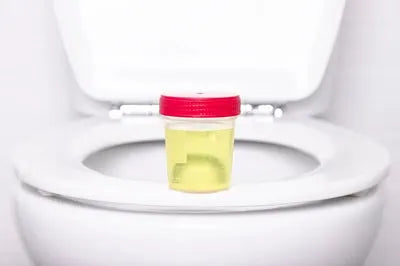We pee every day, but have you ever wondered what it actually is? Is it just water? If so, why isn’t it clear? And what makes it yellow? The truth is, urine is the result of an incredible behind-the-scenes filtration system that your body runs 24/7. Think of your kidneys as a high-tech water purifier, constantly filtering out waste and keeping things running smoothly. Every sip of water, every bite of food, and every breath you take contributes to metabolic processes that leave behind toxins. But thanks to your kidneys, these unwanted substances don’t stick around for long. Urine formation is your body’s built-in detox system, ensuring that harmful byproducts like urea, uric acid, salts, and excess water are flushed out efficiently. This behind-the-scenes process keeps you healthy and balanced, but how exactly does it work? Let’s break down the steps in urine formation and understand the complexities behind this essential bodily function.
Steps in Urine Formation
The process of urine formation includes three key stages: glomerular filtration, reabsorption, and secretion. Together, these steps help the body filter out waste while retaining essential nutrients and fluids, ensuring that only unwanted substances and excess water are expelled.
Glomerular Filtration
Imagine your kidneys as super-efficient strainers, working non-stop to clean your blood. Inside each kidney are tiny filtering units called nephrons, and at the centre of each nephron is a special filter called the glomerulus. This filter sits inside a small cup-like structure known as Bowman’s capsule. As blood passes through, pressure pushes water and tiny waste particles through the filter, while keeping bigger things—like blood cells and proteins—inside your bloodstream where they belong, kickstarting the urine formation process. What gets through is called filtrate, the raw material that will eventually become urine. From here, it moves deeper into the nephron for more refining.
Reabsorption
Your body doesn’t want to waste anything useful, so not everything that gets filtered out is thrown away. The first batch of liquid (filtrate) leaving the filter still has important stuff like nutrients, salts, and water. As it moves through tiny tubes in the kidney, your body grabs back what it needs and returns it to the blood. Only the unwanted waste is left behind, making reabsorption a key step in the mechanism of urine formation.
Secretion
As the filtered liquid moves through the kidney, the body does a final cleanup. It pulls back anything useful, like water and nutrients, while pushing extra waste and acids into the tube. This step, called secretion, helps get rid of things your body doesn’t need. The leftover liquid now turns into urine, which travels down to the bladder, waiting to be flushed out.
Factors Affecting Urine Formation
Several factors influence the process of urine formation, from daily habits to underlying health conditions:
-
Fluid intake and losses through sweat and breathing affect urine output.
-
High salt or protein intake can impact kidney function.
-
Some medications alter urine production.
-
Physical exertion influences water loss and filtration rates.
-
Hormonal fluctuations regulate kidney function.
-
Urine output varies with age, with children producing less.
-
Kidney disorders and immune-related diseases like lupus can affect filtration.
-
Stress and cold exposure can trigger protein loss in urine.
Common Disorders Related to Urine Formation
Your urinary system—including the kidneys, ureters, bladder, and urethra—plays a crucial role in the mechanism of urine formation. When something disrupts this process, it can lead to various urinary disorders, including:
-
Infections: Urinary tract infections (UTIs) and sexually transmitted infections (STIs) can inflame the urethra, kidneys, or bladder, requiring antibiotic treatment.
-
Kidney Stones: These solid deposits form when waste compounds crystallise, causing severe pain and potentially blocking urine flow.
-
Urination Problems: Conditions like urinary incontinence, urinary retention, and overactive bladder can lead to frequent urges, leakage, or incomplete emptying. And if you or someone you know is dealing with such leaks, we recommend trying India’s No. 1 Adult Dry Pants by Friends Adult Diapers.
-
Urinary Tract Obstructions: Tumours, pregnancy, enlarged prostate, or gastrointestinal conditions like Crohn’s disease can block urine flow, often requiring surgery.
-
Kidney Disease: Chronic kidney disease (CKD), often caused by diabetes and high blood pressure, can progress to kidney failure, necessitating dialysis or transplant.
-
Interstitial Cystitis: Also called painful bladder syndrome, this condition causes bladder inflammation and discomfort, managed through medication and therapy.
-
Structural Abnormalities: Birth defects like ectopic ureter or underdeveloped urinary organs can cause urination issues, sometimes requiring medical intervention.
-
Bladder Prolapse: When the bladder drops into or out of the vaginal opening, surgery may be needed to restore function.
Your kidneys work around the clock, acting like a built-in detox system to keep your body clean and balanced. The steps in urine formation—glomerular filtration, reabsorption, and secretion—make sure that waste is flushed out while essential nutrients stay in. But this process isn’t just about getting rid of toxins; it’s a delicate balancing act influenced by factors like hydration, diet, and even stress. When things go wrong, conditions like kidney stones, infections, or urinary retention can disrupt daily life. Understanding how your urinary system works can help you take better care of it—so drink plenty of water, eat a balanced diet, and don’t ignore those bathroom habits.
Product Recommendations
FAQs
Where does urine formation take place in the body?
Urine formation takes place in the kidneys, specifically in tiny filtering units called nephrons. Each nephron consists of a glomerulus and tubules that work together to filter blood, reabsorb essential nutrients, and remove waste, forming urine.
How does reabsorption occur in urine formation?
Reabsorption occurs in the renal tubules, where essential nutrients like glucose, amino acids, and water are absorbed back into the bloodstream. This ensures that only waste products and excess water are excreted, maintaining the body's fluid and nutrient balance.
How does the body regulate the concentration of urine?
The body regulates urine concentration through hormones like antidiuretic hormone (ADH) and aldosterone. These control water and salt reabsorption in the kidneys, adjusting urine output based on hydration levels, blood pressure, and electrolyte balance.
How does hydration impact urine formation?
Hydration directly affects urine formation. When well-hydrated, the kidneys produce more diluted urine to remove excess water. In dehydration, urine becomes concentrated as the body conserves water, reducing urine output and making it darker in color.
How does incontinence impact urine formation?
Incontinence does not affect urine formation itself but disrupts urine storage and control. It can lead to frequent, uncontrolled leakage due to weak bladder muscles, nerve damage, or an overactive bladder, making it difficult to regulate urination properly.



















